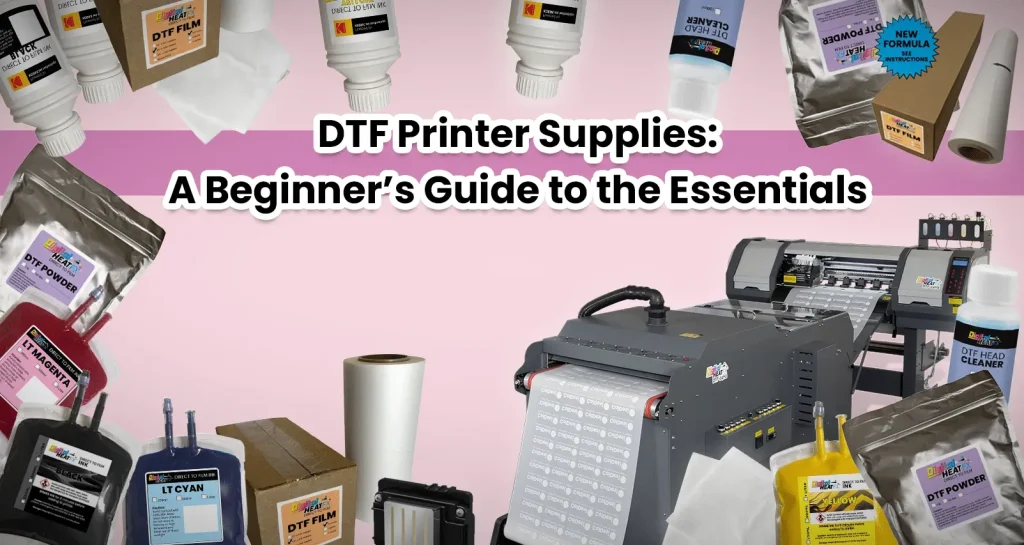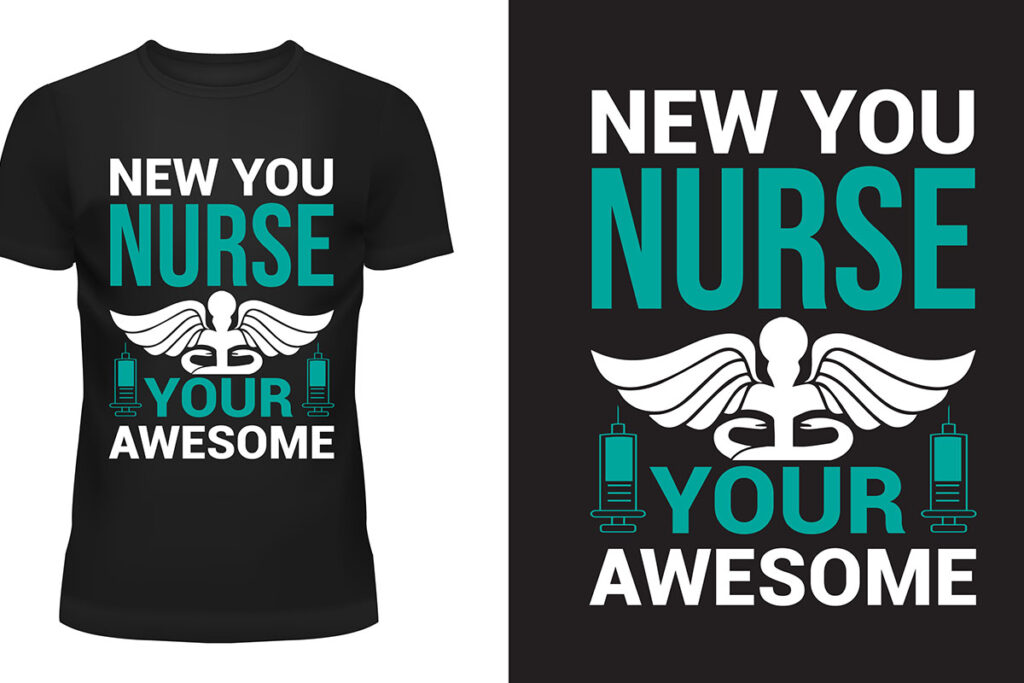DTF supplies are essential tools for anyone looking to dive into the innovative world of Direct to Film printing. This process has revolutionized the way designs are transferred onto fabrics, making it easier than ever for beginners to craft vibrant, eye-catching prints. In this beginner’s guide to DTF, we’ll explore everything you need, from the best DTF films to the intricacies of DTF printer setup, ensuring you’re fully equipped to embark on your printing journey. With the right DTF printing equipment and supplies, you can achieve professional-quality results without the steep learning curve. Join us as we unlock the secrets of DTF printing and help you get started on your artistic endeavor.
When it comes to fabric printing, the term ‘Direct to Film’ (DTF) encompasses a cutting-edge technique that simplifies the design transfer process. As you venture into this exciting line of printing, understanding the essential materials and tools—such as specialized transfer films and high-quality inks—will be crucial for your success. This guide serves as your gateway to mastering DTF printing, navigating the best practices, equipment, and resources available. Whether you’re a hobbyist looking to personalize items or a professional seeking to enhance your product offerings, having the right DTF supplies is key. Let’s dive deeper into the various components that will set you on the path to high-quality prints and creative satisfaction.
The Fundamentals of DTF Printing Equipment
To excel in Direct to Film (DTF) printing, understanding the equipment is critical. A suitable DTF printer is the backbone of the operation, as it is designed to handle specialized inks and films. Such printers, like the Epson EcoTank series, are capable of being modified for DTF printing, providing excellent color vibrancy and reliable performance. Beginners often look for models that balance cost-effectiveness with high-quality output, enabling them to experiment and grow without overwhelming expenses.
In addition to a DTF printer, the choice of transfer films is paramount. These films come pre-treated to optimize ink adhesion, and selecting films that are compatible with your printer model is crucial. Various types of films, including those designed for light and dark fabrics, ensure versatility and help achieve the vibrant effects typical of DTF printing. Beginners should also consider the importance of DTF inks, as water-based formulations provide long-lasting results essential for quality prints.
Choosing the Best DTF Films for Your Projects
The choice of DTF films can significantly affect the quality of your prints. As a beginner, it is essential to understand that not all films are created equal. Some films are designed for specific types of fabric, while others can be used universally. Selecting the best DTF films involves considering factors such as film thickness, compatibility with inks, and the desired finish for your designs.
Additionally, investing in high-quality DTF films means fewer printing errors and better overall results. Look for films that provide excellent transfer properties, which will help you achieve crisp and vivid designs. As you gain more experience, experimenting with different brands can also help you discover which films work best for your particular style and projects.
Setting Up Your DTF Printer for Optimal Results
Proper setup of your DTF printer is crucial for achieving stunning prints. It involves calibrating the printer settings according to the type of film and ink used. Ensure that you follow the manufacturer’s guidelines for installation, which often includes adjusting the print head height, ink droplet size, and color profiles. A well-set printer can significantly reduce the number of test prints needed, saving time while ensuring top-quality results.
Moreover, regular maintenance of your DTF printer is key to longevity and efficiency. This includes cleaning the print heads, checking ink levels, and periodically running test prints. By establishing a routine, you can avoid clogs and other common issues that could hinder your printing process and affect the quality of your projects.
Understanding DTF Adhesive Powder and Its Importance
In DTF printing, adhesive powder is an essential component that helps bond the ink to the fabric. It’s applied after printing but before final heat transfer, ensuring that the design stays intact during washing and wearing. The right adhesive powder can make a substantial difference in print durability, so it is vital to choose high-quality options designed specifically for DTF use.
As a beginner, familiarize yourself with the application process of DTF adhesive powder. It involves an even coating over the printed film and requires careful attention to ensure optimal adhesion. Improper application can lead to uneven prints or premature peeling, which are common issues that can be easily avoided with practice and adequate knowledge about your chosen materials.
The Role of a Heat Press in DTF Printing
A heat press is non-negotiable in DTF printing as it serves as the final stage in transferring your vibrant designs onto fabric. Proper heat application is critical; it is essential to have a heat press with adjustable temperature and pressure settings to accommodate various materials. This ensures that no matter the fabric type, your designs adhere correctly and maintain their quality.
For beginners, familiarizing yourself with the heat press operation is vital. It’s advisable to conduct test trials with different fabrics to understand the ideal settings that yield the best results. Many heat presses come with user manuals that provide detailed instructions, and experimenting with temperature and pressing time will give you greater confidence in your printing ventures.
Ensuring Safety While Using DTF Printing Supplies
As with any printing process that involves chemicals and tools, safety should always be a priority in DTF printing. Handling inks, powders, and high-temperature equipment may pose hazards, especially for sensitive individuals. It’s crucial to invest in appropriate protective gear, including gloves and masks, to safeguard your health while working with materials.
Moreover, establishing a well-ventilated workspace will help reduce your exposure to any potentially harmful fumes generated during the printing process. Understanding the materials you are using, reading safety data sheets, and following best practices will ensure a safe and enjoyable DTF printing experience.
Frequently Asked Questions
What are the essential DTF supplies I need to get started with DTF printing?
To begin your DTF printing journey, you’ll require several essential supplies including a DTF printer, DTF transfer films, water-based DTF inks, powder adhesive, a heat press, protective equipment, and graphic design software. These items are crucial for producing high-quality prints on various fabrics.
How do I choose the best DTF films for my printing projects?
When selecting the best DTF films, look for options that are specifically coated for DTF printing and compatible with your DTF printer. High-quality films ensure better ink adhesion and vibrant color output, which are essential for achieving professional results.
Can I use any printer for DTF printing, or do I need specific DTF printing equipment?
You need a dedicated DTF printer or a compatible printer that can be converted for DTF inks, such as the Epson EcoTank series. This specialized equipment is designed to handle the unique requirements of DTF printing, including film and ink compatibility.
What is the role of powder adhesive in DTF printing?
Powder adhesive plays a critical role in DTF printing by providing a bonding agent that fuses the printed design to the fabric during the heat pressing process. This ensures a durable finish that withstands washing and wearing, making it an essential part of the DTF supplies.
How can I ensure the proper setup of my DTF printer for high-quality prints?
To ensure your DTF printer is set up correctly, calibrate your printer settings for optimal color output, use high-quality DTF inks, and select the right transfer film. Regular maintenance and test prints will help identify any setup issues before a full run.
What graphic design software is recommended for creating designs for DTF printing?
For crafting designs suited for DTF printing, popular graphic design software options include Adobe Illustrator, CorelDRAW, and user-friendly applications like Canva. These programs allow you to create and prepare high-quality graphics that enhance your printing results.
| Essential Supply | Description |
|---|---|
| DTF Printer | A printer that allows direct printing onto specialized films, essential for producing quality prints. |
| Transfer Films | Specially coated films that ensure ink adherence for high-quality transfers. |
| DTF Inks | Water-based inks specifically designed for DTF printing to achieve vibrant colors. |
| Powder Adhesive | Used to secure the design to fabric during the heat pressing process. |
| Heat Press | Essential for transferring prints from films to fabrics with controlled heat. |
| Protective Equipment | Includes gloves and masks for safety when handling inks and powders. |
| Software for Design | Graphic design tools such as Adobe Illustrator or Canva to prepare designs. |
Summary
DTF supplies are essential for anyone looking to explore the innovative world of Direct to Film printing. This beginner’s guide outlines the key materials needed to get started in this vibrant printing technique. From purchasing a quality DTF printer to selecting high-quality transfer films and inks, having the right tools is crucial for achieving stunning results. Protective equipment and design software further enhance your ability to create beautiful and durable prints. By understanding these key supplies and their functions, you are well on your way to producing professional-quality fabric prints that truly showcase your creativity.



